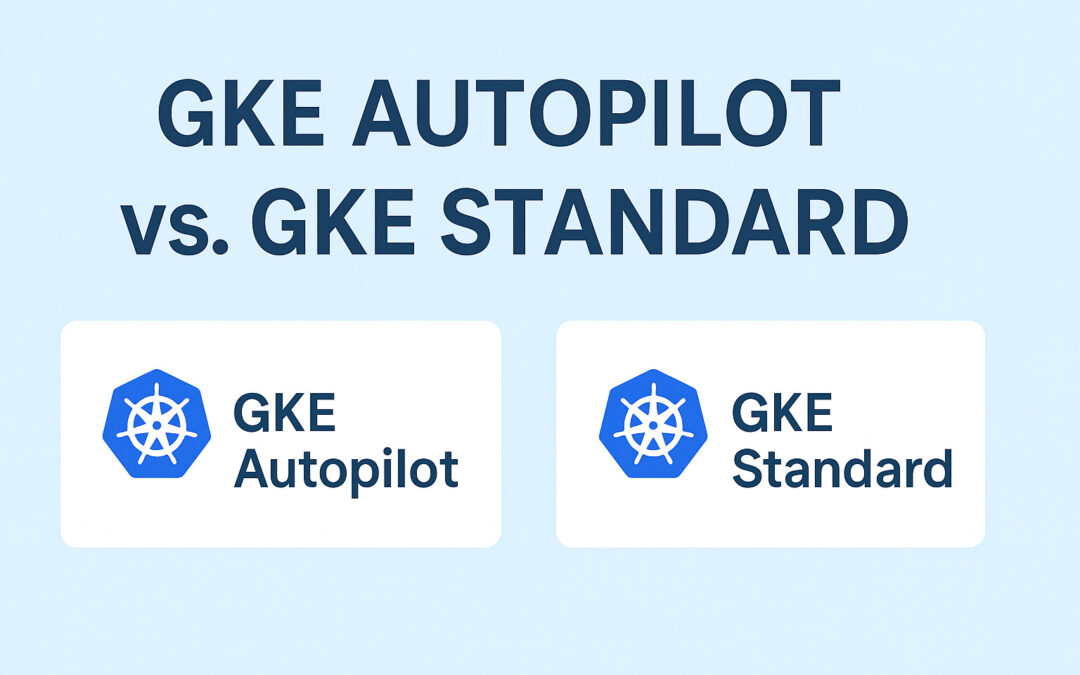Google Kubernetes Engine (GKE) is a powerful platform to run containerized applications in the cloud. But when you spin up a cluster in GKE, you’re faced with an important choice:
GKE Standard or GKE Autopilot?
If you’re unsure which one to choose, this article will guide you through the key differences, use cases, pricing, and trade-offs.
🧭 What Are GKE Autopilot and GKE Standard?
Both are modes of operation within Google Kubernetes Engine. They offer the same Kubernetes experience on the surface but differ greatly in how much infrastructure management you take on.
🔹 GKE Standard
You manage the nodes and infrastructure:
- Full control over node pools (machine types, sizes, updates)
- Access to the underlying VM instances (SSH possible)
- Great for advanced tuning, custom networking, GPU/TPU workloads
🔹 GKE Autopilot
Google manages the infrastructure for you:
- No node pools to configure — you just deploy Pods
- Pay only for what your Pods actually request and use
- Best for teams that want to focus on applications, not ops
⚖️ Key Differences at a Glance
| Feature | GKE Standard | GKE Autopilot |
|---|---|---|
| Node Management | You manage it | Google manages it |
| Billing | Based on VM uptime | Based on Pod resource usage |
| SSH / VM Access | Yes | No |
| Resource Requests Required | Optional | Required |
| Autoscaling | Node + Pod level | Pod level only (nodes are automatic) |
| Customization | Full control | Limited to Kubernetes-level |
| Use Cases | Complex systems, custom infra | Simpler apps, rapid dev/test |
💸 Cost Comparison
GKE Autopilot often appears cheaper for small workloads or dev environments, because:
- You don’t pay for idle nodes
- Costs are based on vCPU and memory used per second
However, in high-throughput or always-on systems, GKE Standard can be cheaper when optimized with:
- Committed use discounts
- Spot/preemptible VMs
- Custom VM sizing
👉 TL;DR:
| Workload Type | Cheaper Option |
|---|---|
| Light, bursty workloads | Autopilot |
| Heavy, stable workloads | Standard (optimized) |
🛠️ CronJobs and Short-Lived Workloads in Autopilot
Yes — you can run Kubernetes-native CronJobs in Autopilot mode!
But there’s a catch:
Autopilot requires every container to have resource requests defined (CPU & memory). So short-lived CronJobs need proper sizing, or they won’t be scheduled.
This is actually an advantage:
You only pay for the time the CronJob is running, down to the second. Perfect for scheduled tasks or lightweight data jobs.
🧑💻 Which One Should You Use?
| You Should Use… | If You… |
|---|---|
| GKE Autopilot | Want to skip infrastructure ops, get cost efficiency, or deploy quickly |
| GKE Standard | Need total control over infrastructure, GPU access, or advanced networking |
✨ Conclusion
Google has made Kubernetes easier with Autopilot — an ideal entry point for developers and teams who want the benefits of Kubernetes without the operational overhead.
But GKE Standard isn’t going anywhere. For mature workloads with fine-tuned performance and infrastructure needs, it still delivers unmatched flexibility.
📚 Bonus: Considering migrating from GKE Standard to Autopilot? Try deploying the same application on both to experience the differences firsthand — including setup, performance, and cost. It’s a great way to learn and optimize!
